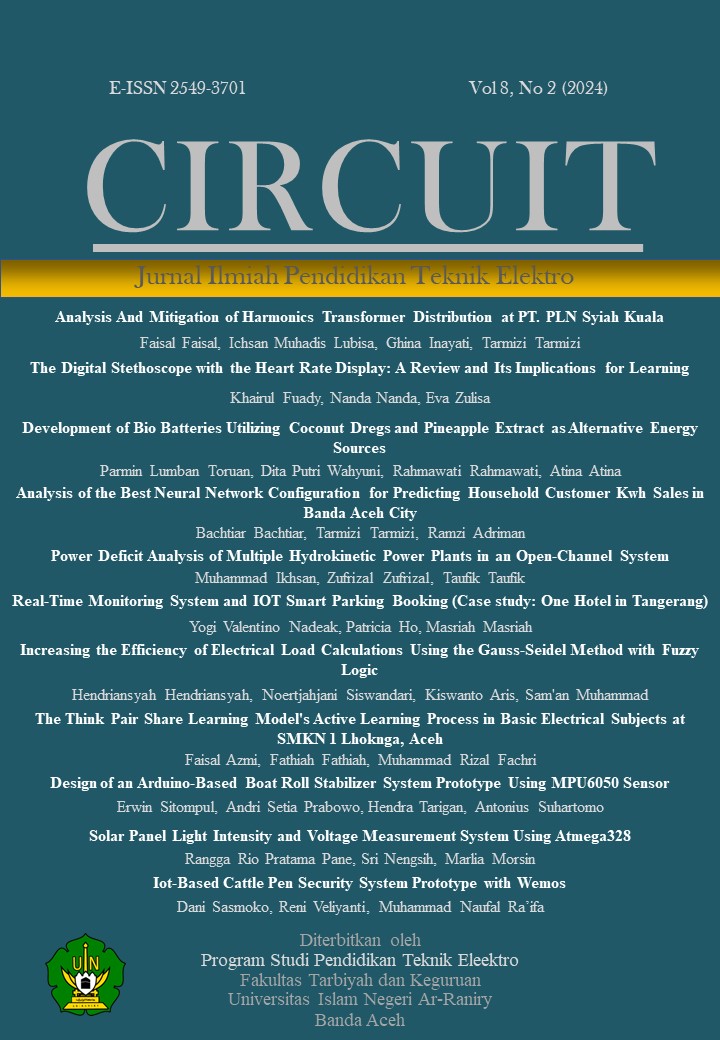The Digital Stethoscope with the Heart Rate Display: A Review and Its Implications for Learning
DOI:
https://doi.org/10.22373/crc.v8i2.22096Keywords:
Stethoscope, heart rate, seven segmentAbstract
A stethoscope is an important medical tool for initial examination of a patient's heartbeat, including detection of arrhythmias (heart rhythm disturbances). This digital stethoscope equipment has input voltage specifications from a power supply of +6 Volt DC and +12 Volt DC, condenser mic as a stethoscope sensor, LED as a heart rate indicator, seven segments as a heartbeat display and timer, earphones as a tool for hearing sounds heartbeat and amplifier circuit. The research was carried out using system operations and supporting blocks to analyze the results of tool testing. The voltage measurements in the tool support block were obtained according to the plan, the start timer circuit voltage was 4.6 VDC (working), the NE555N IC output voltage was 5.8 VDC and the voltage at the transistor collector leg was measured when the condenser microphone received a sound signal. A digital stethoscope can display heartbeats for a duration of 15 seconds, so it still requires manual calculations to determine the heartbeat for 1 minute. Based on the test results, this Stethoscope will be an effective learning aid to improve students' medical skills
Downloads
Published
Issue
Section
License
Authors who publish in CIRCUIT: Jurnal Ilmiah Pendidikan Teknik Elektro agree to the following terms:
- Authors retain copyright and grant the journal right of first publication with the work licensed under a Creative Commons Attribution-ShareAlike 4.0 International License (CC BY-SA 4.0) that allows others to share and adapt the work with an acknowledgement of the authorship and initial publication in this journal
- Authors are able to enter into separate, additional contractual arrangements for the non-exclusive distribution of the journal's published version of the work (e.g., post it to an institutional repository or publish it in a book), with an acknowledgment of its initial publication in this journal.
- Authors are permitted and encouraged to post their work online (e.g., in institutional repositories or on their website) prior to and during the submission process, as it can lead to productive exchanges, as well as earlier and greater citation of published work. (See The Effect of Open Acces)

